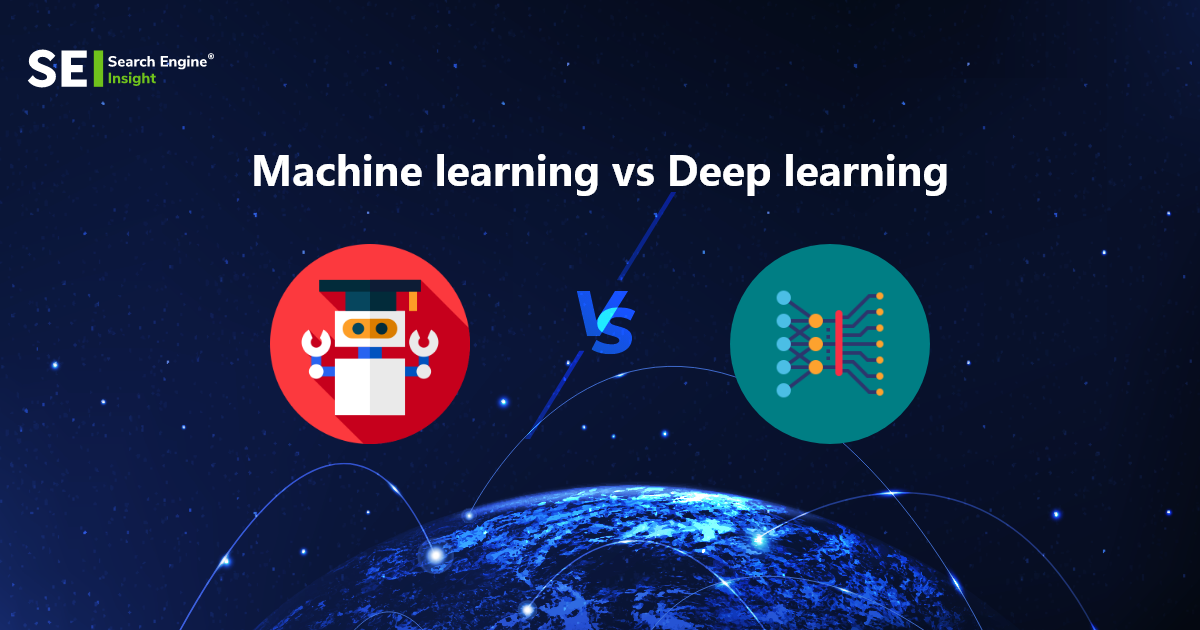Machine learning vs. Deep learning: Ultimate Guide in 2023
The terms machine learning and deep learning are equivalent in the context of artificial intelligence (AI). The simplest way to comprehend the distinction between deep learning and machine learning is to realize that deep learning is merely a subset of machine learning. These two fields of technology fall under the umbrella of artificial intelligence.
Artificial intelligence (AI) and its use in automating human labor are currently hot topics. Its primary goal is to develop robots with the level of intelligence to perform tasks that typically require human intelligence. The primary objectives of artificial intelligence are the automation of human labor and the development of intelligent machines capable of self-learning.
The most effective application of artificial intelligence is in self-driving cars. These self-driving carscan sense their surroundings and drive safely with little to no help from a human. Every company aims to increase profits by incorporating AI’s potential into its current technologies.
Table of Contents
Artificial Intelligence’s Subfields
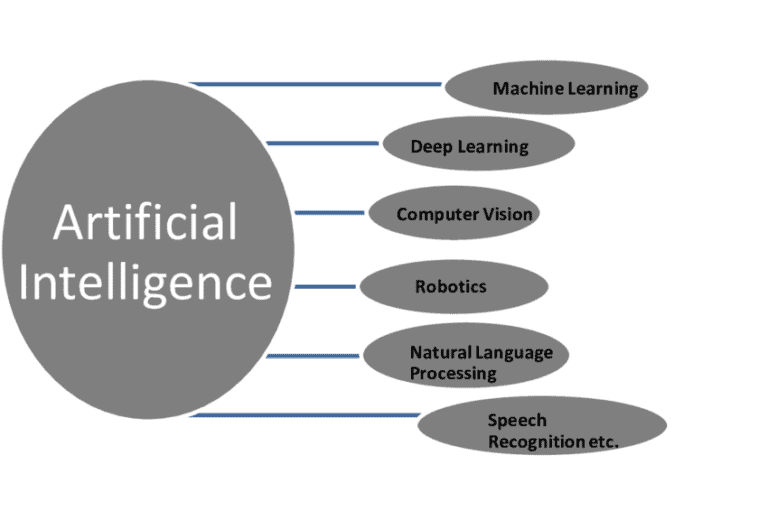
In the broad field of AI, there are two subfields: machine learning and deep learning.
- Have you ever wondered how YouTube selects the videos it recommends to you? How does Netflix determine which shows you’re likely to enjoy without knowing your viewing preferences? Machine learning offers a remedy. Machine learning is now considered a subfield of artificial intelligence. They can predict your preferences using their large datasets. But because of its numerous flaws, deep learning has become popular.
- Ever wonder how Google can quickly translate an entire webpage into another language? How is the location-based image storage organization on your phone set up? An “artificial neural network” is used in the machine learning subfield of deep learning to simulate how our brains make decisions. Deep learning is the underpinning technology of everything here. Deep learning attempts to simulate how the human brain works. A deep learning model learns from its prior judgments, as we all learn from our mistakes.
What is Machine Learning?
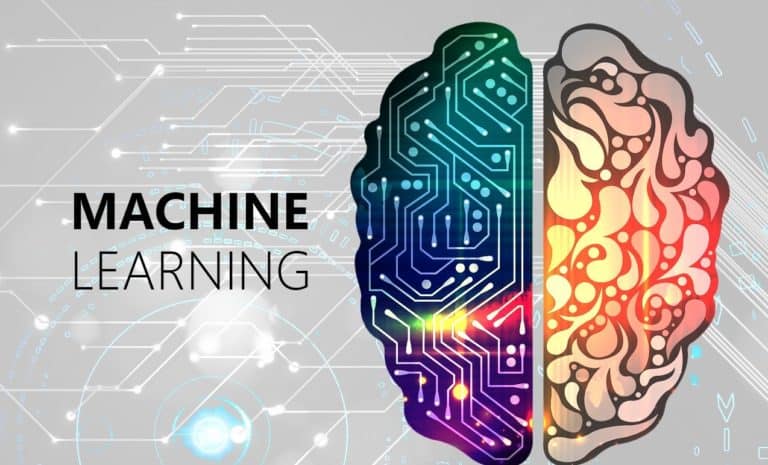
A programmer can use primitive AI by manually coding each “option” to instruct a computer how to respond to different sets of instructions. Computer scientists can use machine learning models to “train” a system by supplying it with vast amounts of data. Computer systems that automatically learn from experience and adapt without being specifically programmed are the subject of machine learning research.
The computer analyzes data and derives conclusions using a set of rules collectively called an algorithm. The more data the computer processes, the easier it is to complete a task or reach a conclusion.
Example
Spotify learns your musical tastes and recommends songs. When you let the service know that a song is your favorite by listening to it to the end or adding it to your collection, the algorithms are enhanced to give you more accurate recommendations.
Netflix and Amazon use comparable machine-learning techniques to provide individualized suggestions.
Types of Machine Learning
Various machine learning algorithms are used in particular scenarios, though the three most prevalent techniques are still in use today. To understand the benefits and drawbacks of each machine learning technique, we must first consider the types of data that each technique uses. Machine learning uses two types of data: labelled data and unlabeled data.
- The input and output parameters are machine-readable in labelled data, but labelling the data itself takes a lot of human labor.
- Unlabeled data has a maximum of one machine-readable parameter. This eliminates the need for human labor but necessitates more challenging solutions.
Supervised Learning
One of the most fundamental forms of artificial intelligence is supervised learning. The machine learning algorithm is given a small training dataset for supervised learning. In this case, the machine learning system is trained on labelled data. Although accurate data labelling is necessary for this method to function, supervised learning is incredibly effective when used appropriately. Supervised machine learning algorithms are constantly improving by uncovering new patterns and associations because they are trained on new data.
The algorithm receives the task-specific labelled parameters from the training dataset, which shares many properties with the final dataset. The algorithm understands how the data work and how input and output are connected after training. This solution is implemented and then applied to the test dataset, from which it learns the same things as it did from the training dataset.
Unsupervised Learning
Unsupervised machine learning has the benefit of allowing for the use of unlabeled data. The software can handle much larger datasets because it is implied that no human labour is needed to make the dataset machine-readable. This provides more opportunities for post-deployment development than supervised learning techniques. Unsupervised learning algorithms are adaptable because of these hidden structures.
Labels enable the algorithm in supervised learning to identify the precise nature of any relationship between any two pieces of data. Unsupervised learning, however, produces hidden structures because it doesn’t have labels to work with. Unsupervised learning algorithms may adapt to input by continuously changing hidden structures, as opposed to problems that have been explicitly stated and are never changed. The program abstractly understands relationships among data points without requiring human input.
What is Deep Learning?
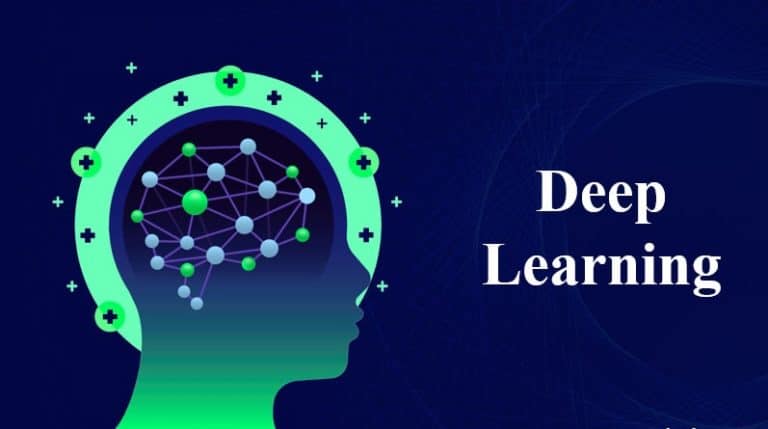
Deep neural networks were developed with inspiration from the structure of the human brain. Similar to how our brains work, this network of interconnected algorithms uses non-linear processing to analyze data.
Deep learning algorithms may improve their results through repetition without involving a human, unlike machine learning algorithms, which frequently need human intervention when making mistakes.
A machine learning algorithm can learn from tiny amounts of data, whereas a deep learning algorithm requires enormous volumes of data, some of which may be heterogeneous and unstructured.
Types of Deep Learning
Let’s now examine the numerous deep learning network architectures that exist.
An integrated neural network
These networks are beneficial for breaking down a significant problem into smaller, more manageable ones and tackling each one independently. This network is more of a collection of smaller networks than a larger one. An extensive neural network is formed by the smaller networks working together to perform a single task, each independently.
A Neural Feed-Forward System
Computer vision algorithms use these networks for facial recognition. This is the most basic type of neural network because flow control is implemented from the input layer to the output layer. This network has no backpropagation method because data only flows in one direction.
Convolution Neural Network (CNN)
CNN is one variety of multilayer perceptron. CNN has a deep network with few parameters because it only uses one convolution layer. The convolutional layer count on CNN could be higher. CNN excels at both pattern recognition and image recognition.
Radial Basis Function Networks
This type of neural network should have two or more layers. Systems for quick power restoration and preventing blackouts frequently employ radial basis networks. In this type of network, the subsequent layer is informed of the relative distance between any two points and the center via calculation.
Multiple-Layer Perceptron
These networks are widely used in machine learning applications like speech recognition. Non-linear data is categorized using this network, which has more than three layers. These networks have complete connectivity between every node.
Deep Learning vs. Machine Learning
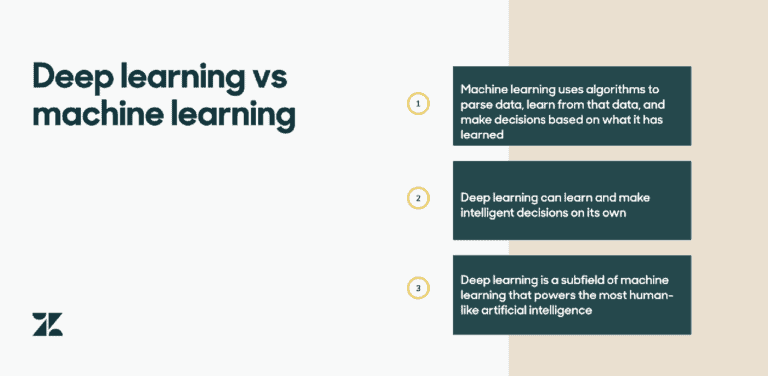
Approach
Machine learning algorithms frequently combine data into constituent parts to produce a result or solution. For instance, if you wanted a piece of software to recognize specific objects in an image, you would need to use machine learning in two steps: object detection and object recognition. However, if you used deep learning software, you would input the image. After training, the computer would produce a single output containing the recognized objects and their locations in the image.
Interaction of Humans
Deep learning aims to learn such features without further human intervention, unlike machine learning systems, which require human intervention to select and hand-code the applied characteristics. Look at a facial recognition program. You’ll see that the algorithm becomes proficient at identifying and recognizing face borders and lines before moving on to more significant aspects of faces and concluding representations of entire faces. The training is carried out by neural networks, which operate similarly to the human brain. This eliminates the need for a person to recode the program.
Time
Machine learning can be finished in a matter of seconds, but deep learning could take anywhere from a few seconds to a few weeks. On the other hand, a deep learning system may take a long time to train due to the numerous parameters, challenging mathematical equations, and data sets needed. For those struggling with these challenging mathematical equations, there are great math tutors Los Angeles has to offer who can provide valuable guidance and assistance.
Hardware
Deep learning systems require much more powerful hardware than machine learning systems because of the volume of data processed and the complexity of the mathematical calculations required by the algorithms used. Machine learning software can be run on devices with less processing power.
Applications
Basic machine learning applications include:
- Email spam IDs.
- Predictive programs (like those that predict stock market values or the location and timing of the next hurricane).
- Algorithms that develop evidence-based treatment plans for patients.
Deep learning is frequently used in self-driving cars, which use multiple layers of neural networks to identify objects to avoid, recognize traffic signals, and decide when to accelerate or decelerate. These deep learning applications include, in addition to the ones already mentioned, Netflix, music streaming services, and facial recognition.
Difference Between Deep Learning and Machine Learning
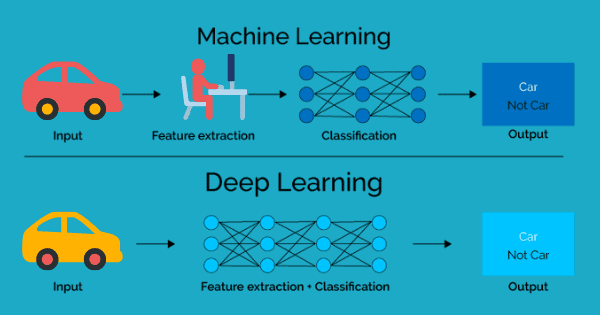
Sr. | Machine Learning | Deep Learning |
Machine learning is a development in artificial intelligence. | Deep learning is the newest advancement in machine learning. It illustrates how far machine learning has come. | |
2. | More interaction with people is required to achieve results. | Deep learning necessitates more setup work but requires less supervision once running. |
3. | Data representation in machine learning and deep learning is very different from one another because deep learning uses structured data. | Deep Learning’s data structure differs from ANN because it utilizes neural networks. |
4. | 11. Machine learning systems might be less effective than they are, despite being easy to set up and use. | Deep learning algorithms may produce results faster but take longer to set up. |
5. | Machine learning models can solve simple or complicated problems. | The best methods for resolving complex problems are deep learning techniques. |
6. | People create features specifically through machine learning. | Neural networks automatically recognize crucial traits, eliminating the need for feature engineering. |
7. | Unlike deep learning apps, machine learning apps are easier to use and can be run on standard computers. | Deep learning algorithms make extensive use of hardware and resources that are much more powerful. |
8. | Data scientists choose algorithms to analyze particular variables in data sets. | Algorithms effectively self-describe once they are used in data analysis. |
9. | You can train on a computer. | The training requires a dedicated GPU. |
10. | Machine learning is already used in banks, clinics, and post offices. | Deep learning technology enables more advanced and autonomous algorithms, like those used in robotic surgery or driverless cars. |
11. | It requires less time to train because its model is more diminutive. | Due to the large number of data points, it takes some time. |
12. | Machine learning uses thousands of different data points. | Big data is made up of millions of data points. |
13. | The output of an ML model is simple to comprehend. | Deep learning outcomes are challenging to describe. |
14. | Many people use machine learning to cultivate new skills and maintain competitiveness. | Deep learning is used to address challenging machine learning problems. |
15. | Employs different automated methods to convert input into model functions and forecast future behavior. | Data features and relationships are analyzed by a neural network that delivers data through processing layers. |
16. | One of machine learning’s components is deep learning. | Deep learning has a subset called machine learning. |
Deep Learning and Machine Learning's Future Directions
Deep learning and machine learning have virtually limitless future applications! Deep learning and machine learning will allow businesses and individuals to allocate resources more effectively. There will be more robot employment in manufacturing and jobs that could significantly and subtly enhance our daily lives. Additionally, machine learning and deep learning will continue to advance far beyond these three fields. Healthcare will undoubtedly change due to deep learning’s ability to help doctors predict or detect cancer earlier, potentially saving lives. Many areas that will be improved are only ideas in developers’ heads.
The Final Words
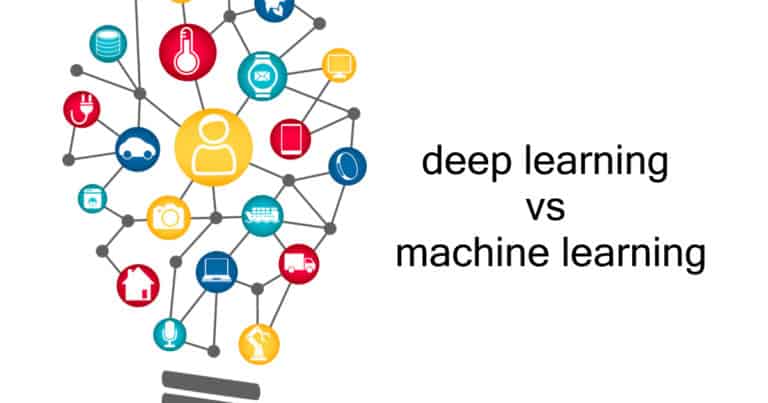
Being a machine learning engineer at this time is exciting, as you might have imagined. Therefore, if you want to learn more or pursue a career in this field, there has never been a better time to start your studies. This course covers various topics, including Python, TensorFlow Deep Learning, Natural Language Processing, Speech Recognition, Computer Vision, and Reinforcement Learning. According to PayScale, the yearly salary for a machine learning engineer (MLE) is between $100,000 and $166,000. Enroll in the AI ML Course if you’re interested in earning a certificate that will advance your career in AI and look good on your resume.
So hopefully, you have a thorough understanding of both topics after reading this article comparing machine learning and deep learning, as well as a glimpse into what the future may hold for both disciplines.
Frequently Asked Questions
Q. How much math is involved in deep learning?
Ans. To train deep learning models, you need a solid mathematical background. Numerous machine learning methods rely on vector operations and manipulations made possible by linear algebra. Most deep learning research is built on calculus and linear algebra concepts.
Q. Does Netflix use deep learning or machine learning?
Ans. Netflix produced billions of data points in the process, in addition to being able to provide customers with easily accessible and reasonably priced content. Netflix used machine learning (ML) to provide customers with a highly customized experience with the recently discovered data.
Q. Is there a future for deep learning?
Ans. Humans cannot process the vast amounts of data machines can, but robust governance frameworks are required to ensure success. If companies use data wisely, deep learning may boost revenue, employee retention, and productivity.
Q. Which is superior, deep learning or machine learning?
Ans. Deep learning techniques make extensive use of more powerful hardware and resources. Machine learning programs, which can run on regular PCs, are less complex than deep learning apps.
Q. Can machine learning and deep learning be compared?
Ans. The division of deep learning is known as machine learning. Deep learning was created using our knowledge of neural networks. Even though it still involves letting the machine learn from data, it represents a significant step forward in the development of AI.
